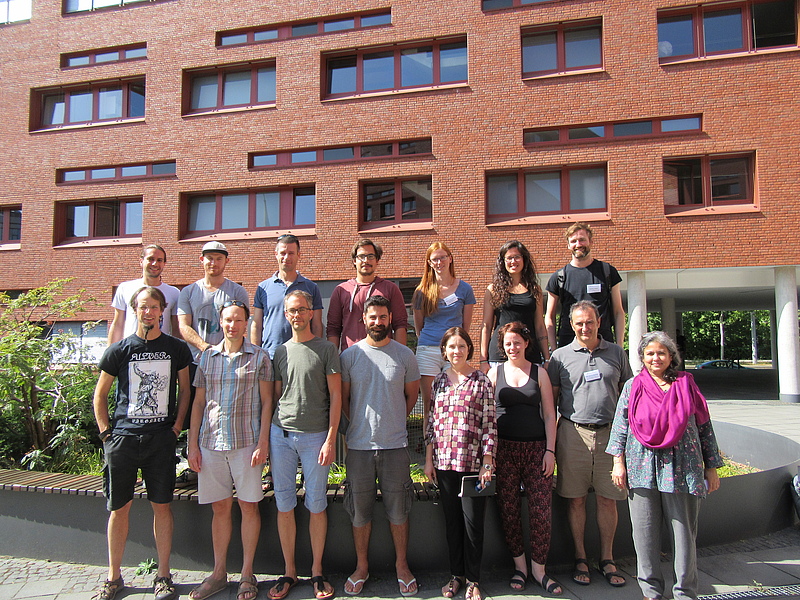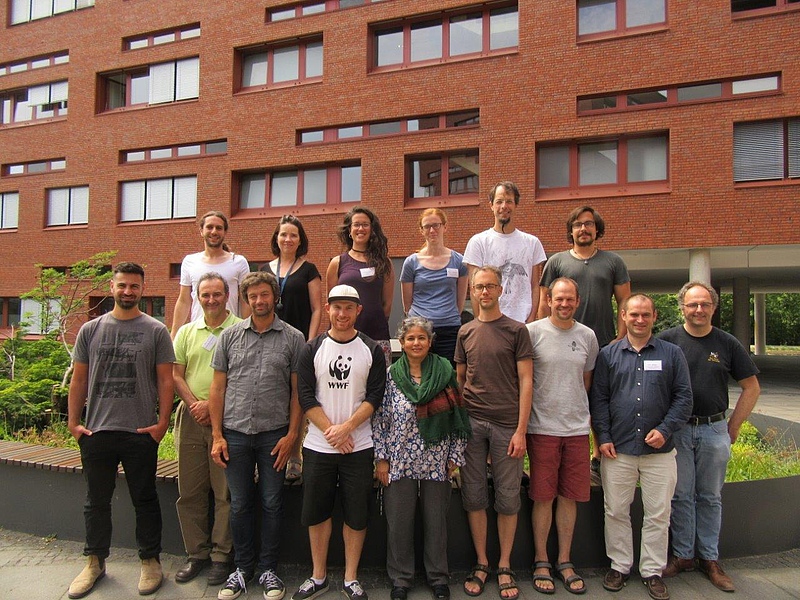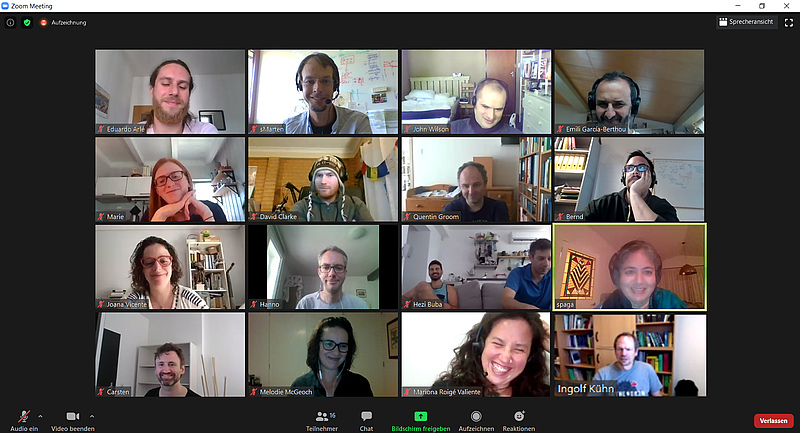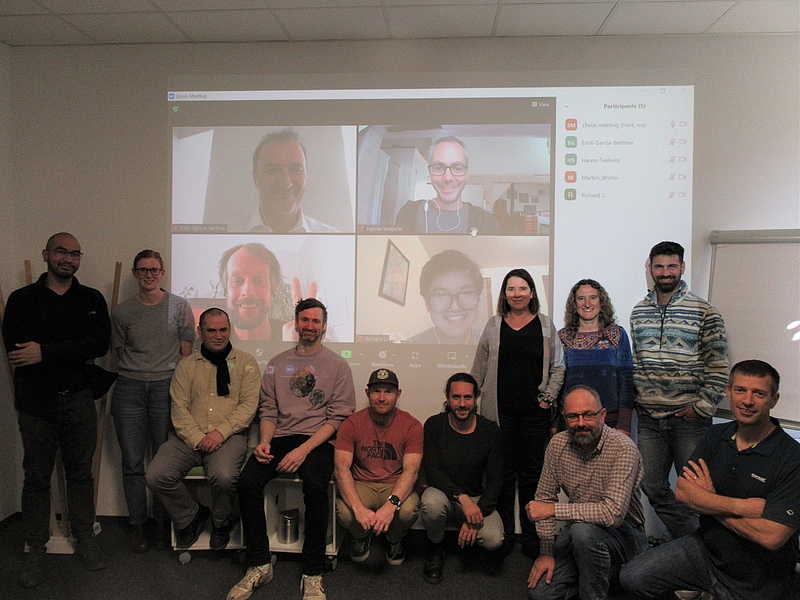sTWIST – Theory and Workflows for Alien and Invasive Species Tracking
First meeting: 20.-24.08.2018
PIs:
Melodie McGeoch
Marten Winter
iDiv members:
Carsten Meyer
Eduardo Arle
Project summary:
Alien and invasive alien species (AIS) numbers, geographic ranges and impacts on biodiversity continue to grow. Developing theory rich, synthetic workflows to deal with this highly policy-relevant problem and key threat to biodiversity is essential. Doing so is not only scientifically exciting, but also theory, methods and data have never been combined in the way we plan for this purpose. The proposed sTWIST collaboration and workshops will enable us to fast track progress to having a scientifically robust method for tracking invasions globally, by completing the conceptual and theoretical development that is an essential precursor for robust invasion indicators. This project will advance research on the dynamics of biological invasion to support indicators by developing the theoretical background and relevant methods and approaches. These will then be combined in useful workflows which enable end-users to produce robust AIS indicators in reproducible steps. Expected contributions include new methods, workflows for how to combine methods and data, first versions of indicators based on a pilot study, peer-reviewed publications and ultimately a sound foundation for operational invasion indicators. We further plan to draft a research proposal for funding options to implement the solutions that are developed across the three workshops. Communicating closely with the CBD, GBIF and the IUCN (ISSG) on invasion policy targets, sTWIST will deliver key elements of the foundation needed for long-term monitoring of biological invasions, for improved assessments and more robust reporting.
Participants:
Eduardo Arlé (iDiv); Celine Bellard (UMR Borea Museum National d’Histoire Naturelle); Jonathan Belmaker (Tel Aviv University); Yehezkel Buba (Tel Aviv University); David Clarke (Monash University); Emili García-Berthou (University of Girona); Marie Vestergaard Henriksen (Monash University); Walter Jetz (Yale University); Ingolf Kühn (Helmholtz Centre for Environmental Research – UFZ); Bernd Lenzner (University of Vienna); Melodie McGeoch (Monash University); Carsten Meyer (iDiv); Shyama Narayan Pagad (University of Auckland); Mariona Roige Valiente (AgResearch); Hanno Seebens (Senckenberg Biodiversity and Climate Research Centre); Joana Vicente (CIBIO / InBIO); Marten Winter (iDiv); not on the pic: John Wilson (South African National Biodiversity Instiute – SANBI): Franz Essl (Univ Vienna/UBA); Helen Roy (CEH); Ingolf Kuehn (UFZ); Mark Costello (Univ Auckland)


sTWIST working group meeting August, 2018


sTWIST working group meeting July, 2019
Second meeting: 03.-07.07.2019
Participants:
Carlos Eduardo Arlé (iDiv), Jonathan Belmaker (Tel Aviv University), Yehezkel Buba (Tel Aviv University), David Clarke (Monash University), Franz Essl (University Vienna), Emili García-Berthou (University of Girona), Quentin Groom (Meise Botanic Garden), Marie V. Henriksen (Norwegian Institute of Bioeconomy Research), Ingolf Kühn (Helmholtz Centre for Environmental Research – UFZ), Bernd Lenzner (University of Vienna), Melodie McGeoch (Monash University), Carsten Meyer (iDiv), Shyama Narayan Pagad (University of Auckland), Mariona Roige Valiente (Agresearch), Hanno Seebens (Senckenberg BiK-F), John Wilson (South African National Biodiversity Instiute – SANBI), Marten Winter (iDiv)
Virtual meeting: 02.-05-06.2020
The sTWIST group has met in the week of 2nd-5th June 2020 for several full group and few break out virtual sessions to present and discuss progress on developing global indicators for alien species. Several publications are on their way. sTWIST outputs will be presented at the GEO BON open science conference (https://conf2020.geobon.org/) and will crucial for the ongoing IPBES assessment on invasive alien species with several sTWIST members being authors of it.
Participants:
Eduardo Arlé (iDiv); Jonathan Belmaker (Tel Aviv University); Yehezkel Buba (Tel Aviv University); David Clarke (Monash University); Emili García-Berthou (University of Girona); Marie Vestergaard Henriksen (Monash University); Ingolf Kühn (Helmholtz Centre for Environmental Research – UFZ); Bernd Lenzner (University of Vienna); Melodie McGeoch (Monash University); Carsten Meyer (iDiv); Shyama Narayan Pagad (University of Auckland); Mariona Roige Valiente (AgResearch); Hanno Seebens (Senckenberg Biodiversity and Climate Research Centre); Joana Vicente (CIBIO / InBIO); John Wilson (CIB/Univ Stellenbosch); Ingolf Kuehn (UFZ); Marten Winter (iDiv); not on the pic: Walter Jetz (Yale University); Franz Essl (Univ Vienna/UBA)


sTWIST working group meeting June, 2020
February 2021 Update
sTWIST is currently working on delivering three indicators of biological invasion based on invasive species population information:
- Trends in richness of invasive alien species – as a basis for estimating rates of invasive alien species spread
- Trends and distribution of invasive alien species impacts – as a basis for estimating change in impacts
- Status of information on invasive alien species introduction, spread and impacts – as a basis for tracking growth in the information needed to inform policy effectiveness.
These indicators are derived from an integration of spatial and temporal data on invasive alien species distributions (Pagad et al. 2019; Seebens et al. 2020). They are supported by the Species Populations Working Group of GEO BON, and inform Targets 5 and 19 of the Post-2020 Biodiversity Framework of the Convention on Biological Diversity.
Pagad, S., et al. (2018). Introducing the Global Register of Introduced and Invasive Species. Scientific Data 5: 170202-170202. https://doi.org/10.1038/sdata.2017.202
Third meeting: 19.-23.09.2022
In person participants
Eduardo Arlé (iDiv); Jonathan Belmaker (Tel Aviv University); Yehezkel Buba (Tel Aviv University); David Clarke (Monash University); Laura Fernandez (CIB/Univ Stellenbosch), Marie Vestergaard Henriksen (Monash University); Ingolf Kühn (Helmholtz Centre for Environmental Research – UFZ); Melodie McGeoch (Monash University); Carsten Meyer (iDiv); Arman Pili (Monash University); John Wilson (South African National Biodiversity Instiute – SANBI)
Remote participants
Marten Winter (iDiv); Hanno Seebens (Senckenberg Biodiversity and Climate Research Centre); Joana Vicente (CIBIO / InBIO); Richard Li (Yale University), Emili García-Berthou (University of Girona), Bernd Lenzner (University of Vienna)


sTWIST working group meeting September, 2022
sTWIST Publications:
Seebens, H., Clarke, D.A., Groom, Q., Wilson, J.R.U., Garcia-Berthou, E., Kühn, I., Roige, M., Pagad, S., Essl, F., Vicente, J., Winter, M. & McGeoch, M. (2020) A workflow for standardising and integrating alien species distribution data. Neobiota, 39-59. See here
Vicente, J. R., Vaz, A. S., Roige, M., Winter, M., Lenzner, B., Clarke, D. A., & McGeoch, M. A. (2022). Existing indicators do not adequately monitor progress toward meeting invasive alien species targets. Conservation Letters, 00, e12918. See here
McGeoch, M.A., Arlé, E., Belmaker, J., Buba, Y., Clarke, D.A., Essl, F., García-Berthou, E., Groom, Q., Henriksen, M.V., Jetz, W., Kühn, I., Lenzner, B., Meyer, C., Pagad, S., Pili, A., Roigé, M., Seebens, H., Tingley, R., Vicente, J.R., Wilson, J.R.U. & Winter, M. (2023) Invasion trends: An interpretable measure of change is needed to support policy targets. Conservation Letters. See Here
R package: alien: Estimate Invasive and Alien Species (IAS) Introduction Rates, H. Buba, J. Belmaker (2024). CRAN or GitHub
Henriksen, M.V., Arlé, E., Pili, A., Clarke, D.A., García-Berthou, E., Groom, Q., Lenzner, B., Meyer, C., Seebens, H., Tingley, R., Winter, M. & McGeoch, M.A. (2024) Global indicators of the environmental impacts of invasive alien species and their information adequacy. Philosophical Transactions of the Royal Society B: Biological Sciences, 379, 20230323. See here
Relevant CBD Links
www.cbd.int/doc/c/705d/6b4b/a1a463c1b19392bde6fa08f3/sbstta-24-03-en.pdf.
www.cbd.int/doc/c/ddf4/06ce/f004afa32d48740b6c21ab98/sbstta-24-03-add1-en.pdf
www.cbd.int/doc/c/4e0e/0677/296c40f85b26a582b8116160/sbstta-24-10-en.pdf